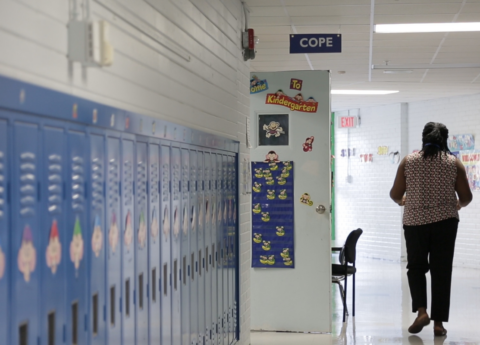There are many reasons to be concerned about funding for charter schools as proposed in HB 520. Local public school districts could lose control of a number of different resources and funding streams in the required transfer of monies to charter schools, adding stress to their budgets and including the loss of monies that may have nothing to do with the services charter schools offer.
Traditional public schools lose authority to direct resources under HB 520
On the surface, HB 520 seems to safeguard traditional public schools from large financial losses by giving them the sole ability to authorize charter schools. Presumably, a local school district would not approve a charter school if it didn’t think it was in the best interest of the district as a whole. However, HB 520 includes provisions that would override the authority of the local district:
- It provides a generous appeals process that would apply to the denial of an initial charter application, as well as virtually any subsequent decision made by the authorizer that a charter school disagrees with.
- It allows the state board of education to act upon its own motion regarding any aspect of a charter agreement, meaning the state board could approve a charter school over the objection of a local school district with no recourse for the local school district.
- It includes virtual charter schools, which could result in a deep loss of resources for multiple local districts without their input; the physical boundaries that would prevent widespread enrollment in a physical charter school would not exist for a virtual charter school.
Resources subject to transfer are extensive
With regard to the breadth of resources and funding streams that are at stake for these local districts, HB 520 requires that:
School districts shall transfer state and local funds to public charter schools on a proportionate per pupil basis after local capital outlay funds, transportation funds, and a three percent (3%) authorizer administrative fee are excluded from gross state and local funds.
HB 520 does not define the term “gross state and local funds”, however the general accounting definition of “gross” when used in relation to revenues or funds means the total amount received before any deductions or allowances. The implications for local school districts are far-reaching.
It appears that amounts received or generated for the following purposes would likely be eligible for transfer to a charter school on a “per pupil” basis under the bill:
- State funds received and local levies generated to support funding under the basic school funding formula known as SEEK, including funding enhancements attributable to specific student populations — such as kids receiving free and reduced lunch, children with disabilities, and those receiving home or hospital instruction (reduced by the statutory carve out for the transportation component);
- Local Tier I and Tier II proceeds, along with any state Tier I equalization funds. Tier I and Tier II revenues are generated through tax levies imposed by local school districts to provide additional funding beyond that provided by the SEEK formula;
- “In lieu of” payments received by the district from entities exempt from taxation such as the Tennessee Valley Authority and the owners of other property exempt from taxation;
- Tuition payments from out of district students;
- District activity funds;
- Earnings from investments;
- Professional development funds that provide teacher and staff training;
- Preschool funds for three and four year-olds;
- Extended school services that provide afterschool programs;
- Funding for textbooks;
- Safe schools funds directed to campus safety;
- Successful school rewards funds;
- Education technology funds;
- Teacher internship funds;
- Principal internship funds;
- Writing program funds; and
- Dropout prevention funds.
It is important to note that these funds could be transferred to charter schools whether or not the services or programs the funding was provided to support are being provided by the charter school. For example, will virtual charter schools receive a portion of funds for extended school services programs, textbooks and safe schools programs even though they may not applicable to charters’ missions? And school boards may choose to levy higher taxes under Tier I and Tier II only to see a portion of the resources go to distant schools, especially in the case of virtual charters.
And this list is not exhaustive. There are many other funds and accounts school districts have that could be included in the gross amount to be divided on a per pupil basis and transferred under HB 520.
An important example concerns funds related to capital construction. The only carve out provided in the language of HB 520 related to capital items is for “local capital outlay,” generally defined as the $100 per pupil allocation provided as part of the SEEK formula. However, there are many other capital-related funding streams, including the required “nickel” for districts to participate in the School Facilities Construction Program and other “nickels” levied by districts specifically for capital construction that could be included. Inclusion of these funds in the amount transferred to charter schools would be particularly detrimental to local districts, as they are typically needed for, and specifically devoted to, paying off bonds or other longer term capital obligations.
Much is at stake for the funding of our existing public schools in charter legislation. It is important for lawmakers to clearly understand the funds subject to transfer from local public schools to charter schools under HB 520 — and how those losses would impact our already-underfunded public school system and the students who depend on it for their education.



